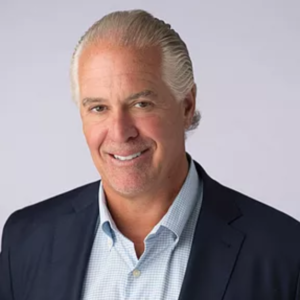Omega Healthcare Investors is giving less flexibility to its struggling operators as the pandemic and related staffing challenges wind on, limiting rent deferrals in favor of transitioning operators and selling off properties across its portfolio.
Leaders of the Hunt Valley, MD-based real estate investment trust on Thursday outlined their shifting strategy, offering insights into its management relationships with several operators facing staffing or liquidity challenges.
“We continue to successfully work through operator restructurings, generally resulting in little to no diminution in value of our assets and our long-term cash flows,” CEO C. Taylor Pickett said during a third-quarter earnings call. “Unfortunately, we expect that we will have ongoing restructuring discussions with certain operators due to inflationary costs, including dramatic increases in UK utility costs, and Medicaid reimbursement and occupancy challenges.”

About 24% of Omega’s operators were on a cash basis at the close of the third quarter, but most of those were making partial rent and interest payments. The biggest outlier was skilled nursing operator Agemo.
Since September, Omega has sold off 21 Agemo properties for $359 million in proceeds. In separate transactions, Omega divested 17 properties in Florida, two in Georgia and two in Maryland. In total, that reduced Agemo’s share of the Omega portfolio by about 2,500 beds. Chief Operating Officer Dan Booth said an additional Florida sale was expected to be finalized in coming weeks.
“The remaining Agemo portfolio will consist of 18 facilities in Tennessee and 11 facilities in Kentucky, with a restated annual rent of approximately $23 million and annual interest of approximately $4.7 million beginning in the second quarter of 2023,” Booth added.
Pickett estimated that would add 3 cents per share to quarterly FAD and the redeployment of proceeds from those sales would add an additional 3 cents per share.
At the end of the third quarter, the REIT’s operating assets included 916 facilities with about 92,000 beds in 42 states and the United Kingdom. Omega had winnowed its operators to 63, down from 70 in early 2020, before the pandemic started in the US.
In trying to support some challenged operators while also meeting income expectations. Omega has balanced partial payments by tapping operators’ security deposits or lines of credit, said Chief Financial Officer Robert Stephenson. But he noted that ongoing reliance on such lines would be short lived as funds dwindled, and that could cut into returns in future quarters.
At least five operators continue to struggle to pay monthly rent obligations to Omega. Pickett said the future response could be more asset sales, operator transitions or rent deferrals.
But in response to investor questioning, he leaned away from deferrals, which were a key flexibility for operators across the country early in the pandemic.
“I think we’ve had a little conversation around rent deferrals, but it’s more around moving assets to new operators, so transitions, and to some extent, incremental sales,” Pickett said. “I think in both those scenarios, you’re talking about lease-enhancing transitions or sales. That’s the expectation from my perspective.”
In deals it has conducted this year, Omega has found plenty of competition for its listed properties. That was the case in the latest Agemo deals, as well, Pickett noted.
He also said Omega’s ability to manage risk and sell assets, then reinvest, has led to a clear “pathway to exit the pandemic with limited financial damage.”
That said, he added that the REIT is watching the next 12 to 16 months closely for the combined effects of COVID-19 surges, inflation and states’ willingness — or reluctance — to make Medicaid increases permanent.
Megan M. Krull, Omega’s senior vice president of operations, said skilled operators in the portfolio “continue to be diligent about” managing COVID in facilities. But many are still enacting self-imposed admission limits due to staffing shortages or an intentional strategy to reduce costs associated with agency. She said 29% of the core facilities had returned to pre-pandemic occupancy levels, with another 25% within five points.
A difference maker for many, in terms of financial sustainability, has been the willingness of state officials in areas where they operate to provide adequate Medicaid funding.
Krull noted that in Florida, where most of the troubled Agemo facilities were located, state officials recently passed a 7.8% increase, but limited FMAP funding only rolled out there in late 2021 — too late for some.
“We can only hope that the states, even if on a lag basis, will rate set commensurate with increased costs and that the federal government will see fit not to impose costly mandates without funding mechanisms to help support such mandates,” Krull said.
Read more coverage of the earnings call in the McKnight’s Senior Living Daily Briefing and the McKnight’s Business Daily.




